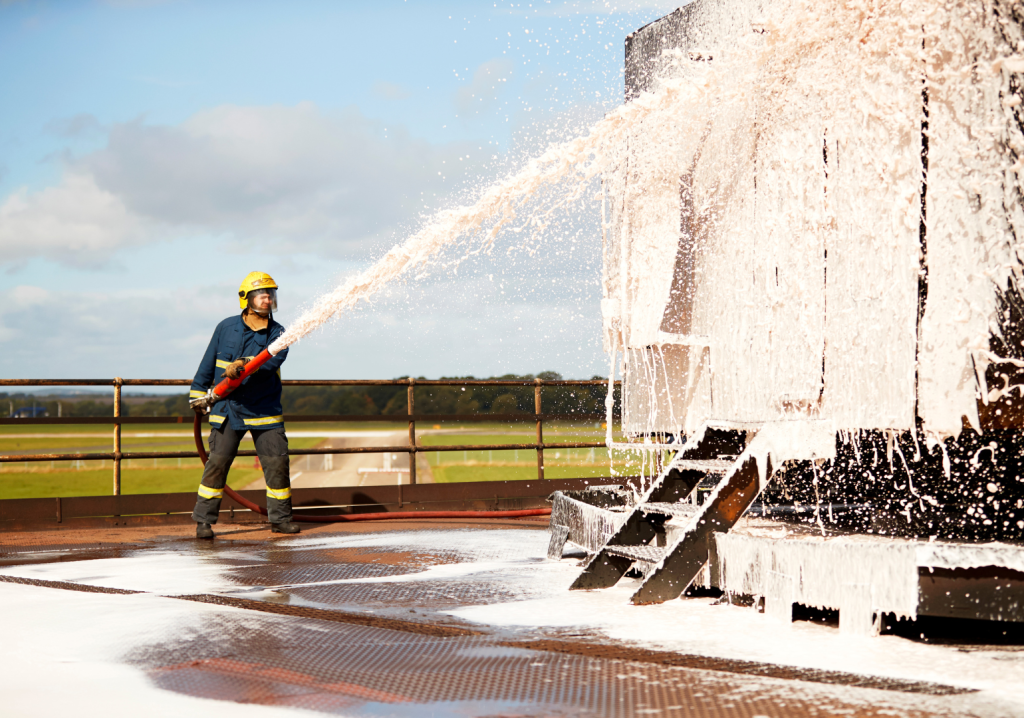As the world grapples with the extent and impact of perfluoroalkyl and polyfluoroalkyl substances (PFAS) contamination, engineers are coming up with novel ways to address the problem.
There are around 12,000 different compounds within the PFAS class that have been identified so far, with only three regulated in Australia.
According to recent international research led by the University of New South Wales, a significant portion of surface and groundwater worldwide surpasses international advisories and regulations for PFAS levels, making our global source water likely exceeding PFAS safe drinking limits.
As studies increasingly reveal the myriad potential impacts of PFAS exposure, including the delay of puberty in girls, decreased bone density in adolescents and an increased risk of Type 2 diabetes in women – a number of class action lawsuits are in the works.
Last year, the Commonwealth was forced to pay out $132.7 million to around 30,000 claimants due to the use of aqueous film forming foam (AFFF) at nearby military bases.
Now, some jurisdictions such as New South Wales, have set up PFAS Investigation Programs to determine the extent of contamination in sites such as airports, where firefighting training using AFFF has been extensive.
But just as we are only beginning to understand the damage PFAS can do to health, we also are we figuring out how these forever chemical compounds migrate through mediums such as soil and water.
Two civil engineers sat down with create to discuss the extent of the problem, and how to isolate and remediate soil contaminated with PFAS using geosynthetics.
Isolation of a pervasive chemical
PFS compounds have a long half-life and are difficult to distil in any medium. Some PFAS remediation processes, such as soil stabilisation with activated carbon, are designed to absorb the contaminants, said Gus Martins, Director of Operations and Engineering with HUESKER Australia.
“But recent findings indicate that after a short period of time, the sorbed contaminants on activated carbon could be released back into the environment, sometimes in a more harmful form than in the initial stage,” he told create.
While activated carbon is widely used in the treatment of various contaminants, when dealing with PFAS, it exhibits concerning desorption behaviour, allowing these compounds to impact the surrounding environment.
“Furthermore, when PFAS-impacted materials, from household items to soils, are transferred to landfills, the issue becomes even more problematic,” Martins said. “Traditionally, landfills are not designed to contain PFAS. Therefore, in the not-so-distant future, these contaminants could potentially escape through the landfill containment layers into the environment.”
So what options do industries have when remediation processes aren’t up to scratch?
That’s where temporary containment measures using geosynthetics come into play by helping to minimise the migration of these contaminants, according to Dr. A (Malek) Bouazza, Professor of Civil Engineering at Monash University.
“When you don’t have remediation processes to deploy quickly, and you still need to deal with the problem, you look for temporary options,” he said.
Digging out contaminated soil and placing it in an engineer-designed, onsite repository can help to ensure PFAS compounds don’t continue to leach into the surrounding environment.
“Typically [this entails] a mix of composite materials where natural soil is re-engineered to create a barrier,” he said. “Then you have geosynthetics which perform different functions, such as waterproofing and draining, which minimise seepage or migration of liquids towards groundwater reserves.”
But to do this effectively, it’s essential to understand how compatible the materials used in the geosynthetic barriers are with PFAS compounds.
“We have to understand how they interact so we are confident in putting a solution forward,” Bouazza said. “In the case of onsite repositories, it’s a short-term solution for up to five years, depending on the jurisdiction.”
This approach could be useful for sites monitored by local environmental agencies, where PFAS have been detected beyond permitted limits.
“If there is an urgency on the issue, onsite repositories can be created to temporarily store contaminated material until remediation processes are in place, or isolate PFAS by other means,” he said. “It all depends on the risk perception related to a given situation.”
While isolation and containment of PFAS using geosynthetics is one solution, another is to allow liquids to flow through contaminated soil to encapsulate PFAS compounds.
“The contaminants are wrapped in a cell, which is permeable,” Martins said. “As water passes through, all the contaminants will be flushed out of the soil to a geocomposite membrane that is able to absorb contaminants such as PFAS.”
The main idea of this approach, which Martins described as an “engineers dream”, is to act as a long-term passive treatment for soil to ensure it’s clean for future generations that not only improves soil quality, but helps to reduce waste generation and carbon emissions.
“It can eliminate the need for stabilisation, transport and disposal of contaminated soil,” Martins said. “So, all carbon dioxide emissions related to these processes are essentially saved.”
Future design focus
Because the problem is so new, Bouazza said it’s important to optimise the design of future sites to cope with PFAS contamination.
This includes future proofing liner systems in landfills or onsite repositories to contain PFAS.
While awareness is starting to get there, there’s still a long way to go in terms of developing solutions.
“It’s step by step,” he said. “Hopefully we will have a better understanding of the mechanisms that dominate migration of these contaminants and how solutions will function based on that knowledge gathering.
“The good news is that this research is already underway in Australia.”
